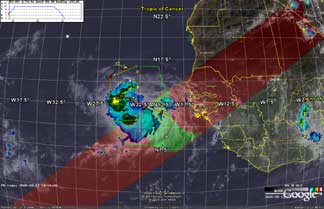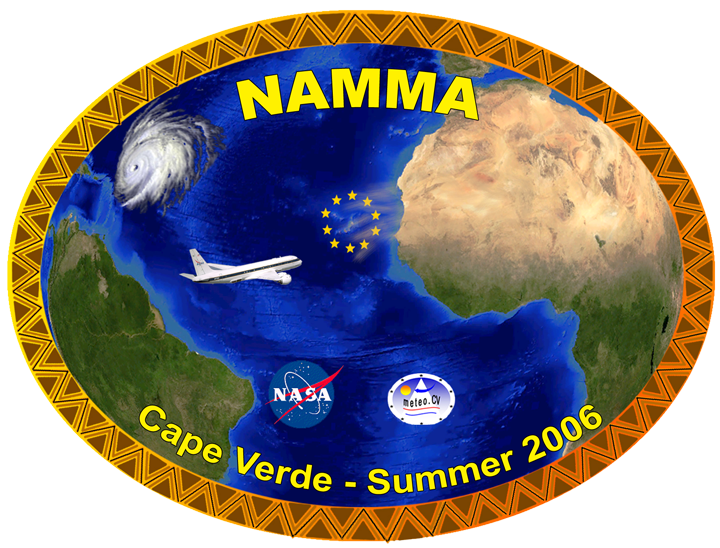
NASA African Monsoon Multidisciplinary Analyses (NAMMA) Mission Summary
The NASA African Monsoon Multidisciplinary Analyses (NAMMA) campaign was a field research investigation sponsored by the Science Mission Directorate of the National Aeronautics and Space Administration (NASA). This mission was based in the Cape Verde Islands, 350 miles off the coast of Senegal in west Africa. Commenced in August 2006, NASA scientists employed surface observation networks and aircraft to characterize the evolution and structure of African Easterly Waves (AEWs) and Mesoscale Convective Systems over continental western Africa, and their associated impacts on regional water and energy budgets. NASA also made extensive use of its orbiting satellites (including Aqua, TRMM, and Cloudsat/CALIPSO) and modeling capabilities to improve its forecasts and flight plans. Dr. Edward Zipser of the University of Utah was the Chief Mission Scientist.

The major research topics of this mission examined the formation and evolution of tropical hurricanes in the eastern and central Atlantic and their impact on the U.S. east coast, and the composition and structure of the Saharan Air Layer, and whether aerosols affect cloud precipitation and influence cyclone development. NASA's DC-8 medium altitude research aircraft served as the primary research tool for the NAMMA investigations. The aircraft was outfitted with in situ and remote atmospheric research instrumentation, flying a complement of 40 crew and scientists conducting 8-hour missions every 2-3 days over the eastern Atlantic Ocean. The DC-8 was flown in coordination with NASA’s NPOL and TOGA research weather radars, balloon soundings, and the SMART-COMMIT mobile research ground stations, measuring chemical, optical, microphysical, and radiative properties of the atmosphere. Scientists from NASA centers including Ames Research Center, Dryden Flight Research Center, Goddard Space Flight Center, Jet Propulsion Laboratory, Langley Research Center, Marshall Space Flight Center and multiple universities contributed to the success of the NAMMA mission. Additionally, the National Oceanic Atmospheric Administration (NOAA) Hurricane Research Division collaborated with NASA through a complimentary Intensity Forecasting Experiment (IFEX 2006) in the Caribbean Sea. NOAA tracked and continued the study of individual AEWs and tropical storms downwind of the NAMMA area as they moved westward across the Atlantic Ocean.
 Research planned under the auspices of this mission was in collaboration with the international African Monsoon Multidisciplinary Analyses (AMMA) experiment, conducted during the Special Observation Period (SOP-3) in the summer of 2006. The NASA contribution of this larger campaign focused on the downstream or oceanic evolution of precipitating convective systems, largely as this evolution pertained to tropical cyclogenesis.
Research planned under the auspices of this mission was in collaboration with the international African Monsoon Multidisciplinary Analyses (AMMA) experiment, conducted during the Special Observation Period (SOP-3) in the summer of 2006. The NASA contribution of this larger campaign focused on the downstream or oceanic evolution of precipitating convective systems, largely as this evolution pertained to tropical cyclogenesis.
Dr. Ramesh Kakar, the NASA Weather Focus Area Lead and Program Manager for Atmospheric Dynamics at NASA Headquarters, was the NAMMA mission director.
DOI:
http://dx.doi.org/10.5067/NAMMA/DATA101






